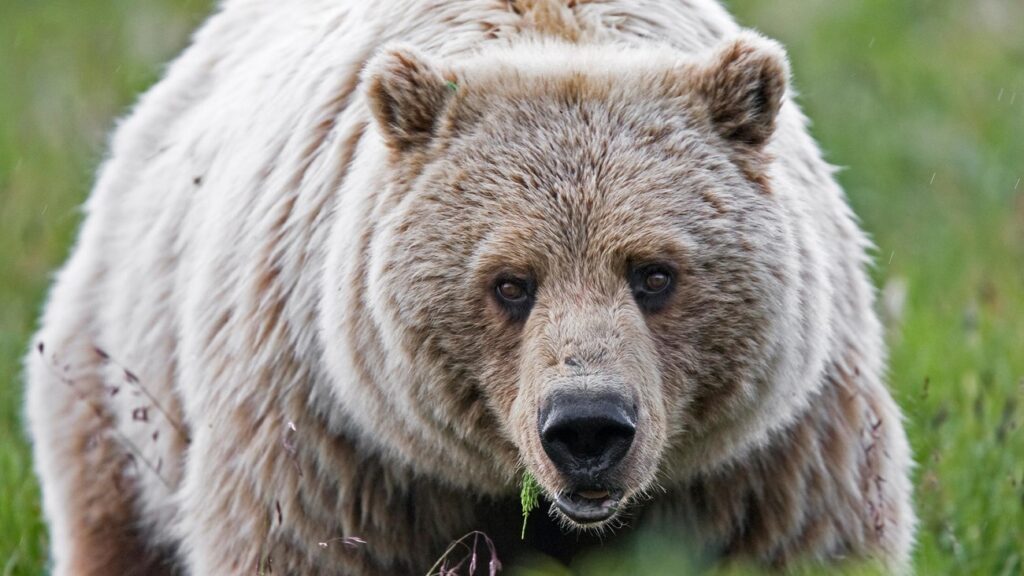Bears: Majestic Creatures of the Wilderness captivate the imagination with their sheer power and enigmatic presence. From the towering grizzlies of North America to the elusive pandas of Asia, bears hold a special place in ecosystems worldwide. This article delves into their world, exploring their habitat, behavior, and the conservation efforts aimed at safeguarding their future.
Exploring Bear Species Across the Globe
Bears are distributed across various continents, each species adapting uniquely to its environment. From the Arctic tundra to the dense rainforests, these remarkable creatures thrive in diverse landscapes.
In North America, the Grizzly Bear reigns supreme, embodying strength and resilience. These massive predators roam the rugged terrain of Alaska and western Canada, commanding respect from all who encounter them. Their hulking frame and distinctive shoulder hump make them an iconic symbol of the wild.
The Polar Bear, perfectly adapted to the icy realms of the Arctic, epitomizes grace and power in the face of extreme conditions. With their thick fur and insulating layer of blubber, they navigate the frozen landscape with ease, embodying the spirit of the north.
Across the Pacific, the Giant Panda captivates hearts with its endearing appearance and gentle demeanor. Found in the bamboo forests of China, these charismatic bears symbolize conservation efforts worldwide, serving as ambassadors for wildlife preservation.
The Brown Bear, encompassing various subspecies like the Kodiak and Eurasian brown bears, holds sway in Europe, Asia, and North America. From the dense forests of Russia to the coastal regions of Alaska, these adaptable creatures demonstrate remarkable versatility in their habitats.
Understanding Bear Behavior and Ecology

Bears exhibit a range of behaviors shaped by their environment and evolutionary history. From solitary hunters to social creatures, each species has developed unique strategies for survival.
Foraging and Feeding Habits: Bears are opportunistic omnivores, consuming a varied diet based on seasonal availability. From berries and roots to fish and small mammals, they adapt their feeding habits to ensure sustenance throughout the year.
Hibernation: One of the most fascinating aspects of bear behavior is hibernation. As winter approaches, bears enter a state of dormancy, conserving energy during periods of scarce resources. This adaptation allows them to survive harsh conditions and emerge rejuvenated in spring.
Reproduction and Family Dynamics: Bears display diverse mating rituals and parenting behaviors. While some species are solitary breeders, others form temporary associations during the mating season. Cubs are nurtured by their mothers, learning essential skills for survival in the wilderness.
Human-Bear Interactions: Challenges and Conservation Efforts
As human populations expand, conflicts between humans and bears escalate, posing significant challenges for conservationists.
Habitat Loss and Fragmentation: Deforestation and urban development encroach upon bear habitats, disrupting natural ecosystems and limiting their range. Conservation efforts focus on preserving critical habitats and establishing protected areas to ensure the long-term survival of bear populations.
Poaching and Illegal Wildlife Trade: Bears are often targeted by poachers for their fur, gallbladders, and other body parts used in traditional medicine. Strict enforcement of wildlife laws and raising awareness about the consequences of illegal trade are essential in combating this threat.
Climate Change: The impact of climate change poses a significant threat to bear populations worldwide. Melting ice caps and shifting weather patterns disrupt food sources and habitat availability, forcing bears to adapt to rapidly changing conditions.
Community-Based Conservation Initiatives: Engaging local communities in conservation efforts is crucial for the success of bear conservation programs. By promoting coexistence and sustainable practices, these initiatives foster a sense of stewardship among residents, ensuring the protection of bears and their habitats for future generations.
FAQs About Bears: Majestic Creatures of the Wilderness
- Are bears dangerous to humans?
Bears are typically wary of humans and avoid confrontation. However, they can become aggressive if provoked or if their cubs are threatened. It’s essential to respect bear habitats and follow safety guidelines when exploring wilderness areas. - Do bears hibernate every winter?
While most bear species hibernate during winter, the duration and depth of hibernation vary depending on factors like food availability and climate conditions. - How do bears communicate with each other?
Bears use a combination of vocalizations, body language, and scent marking to communicate with conspecifics. Growls, roars, and grunts convey aggression or warning signals, while posturing and scent marking establish territory and social hierarchy. - What is the biggest threat to bear populations?
Habitat loss and fragmentation, coupled with poaching and climate change, pose significant threats to bear populations worldwide. Conservation efforts are crucial in addressing these challenges and ensuring the long-term survival of bears in the wild. - Are bears endangered species?
Several bear species, including the Giant Panda and the Polar Bear, are classified as endangered due to habitat destruction, poaching, and other human-induced factors. Conservation measures are essential in protecting these iconic animals from extinction. - How can individuals contribute to bear conservation efforts?
Individuals can support bear conservation efforts by promoting awareness, practicing responsible eco-tourism, and supporting organizations dedicated to wildlife preservation. By making informed choices and advocating for conservation policies, everyone can play a role in protecting bears and their habitats.
Conclusion
Bears: Majestic Creatures of the Wilderness embody the untamed beauty of the natural world. From the towering grizzlies of North America to the playful pandas of Asia, these remarkable animals inspire awe and admiration. By understanding their behavior, addressing conservation challenges, and fostering coexistence, we can ensure a future where bears continue to thrive in the wild.
